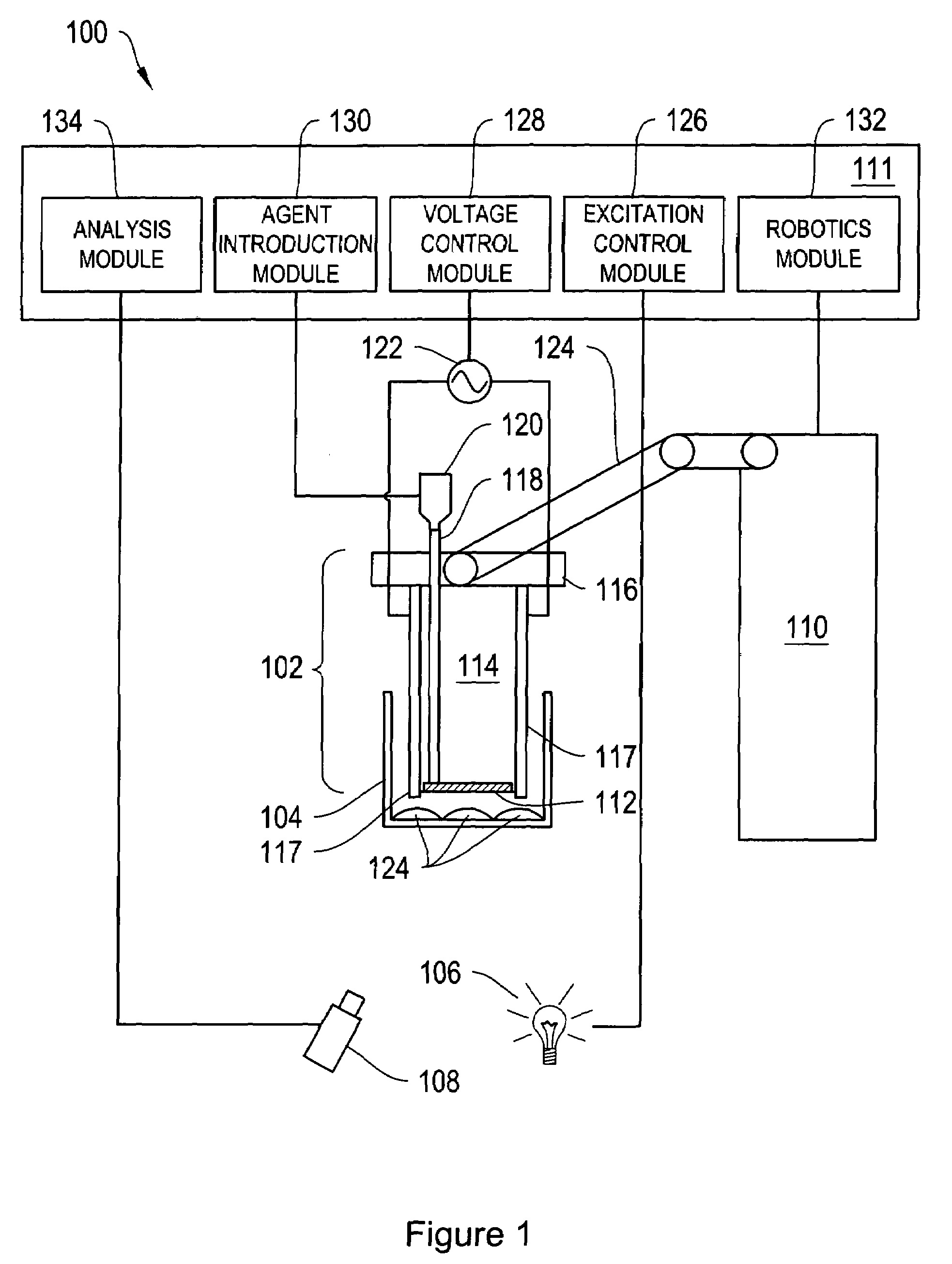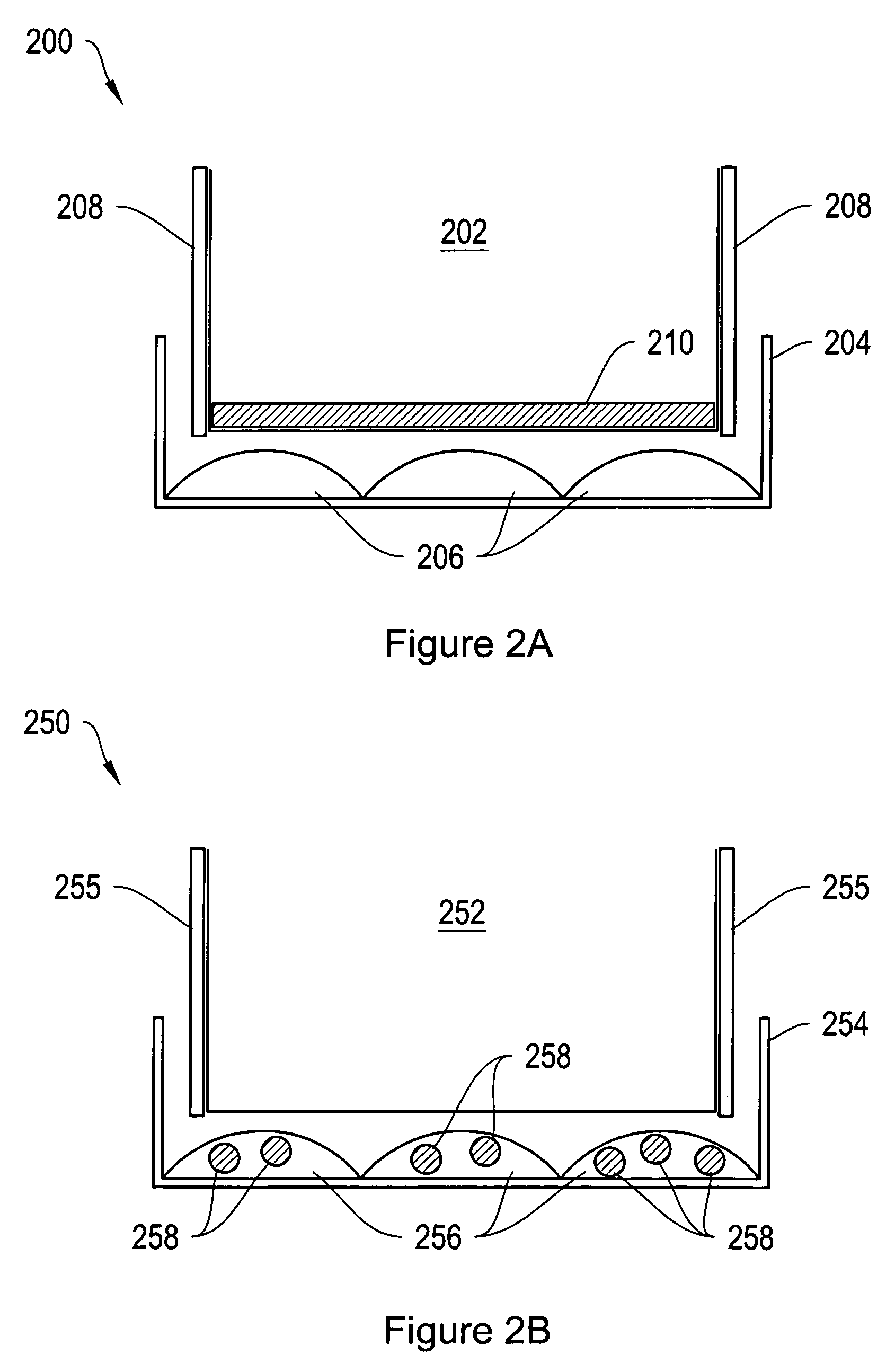Systems and methods of voltage-gated ion channel assays
a technology of voltage-gated ion channels and assays, which is applied in the field of systems and methods of voltage-gated ion channel assays, can solve problems such as interference with the proper operation of these voltage-gated ion channels
- Summary
- Abstract
- Description
- Claims
- Application Information
AI Technical Summary
Problems solved by technology
Method used
Image
Examples
example 1
[0083]In one particular example, a cell assay system built in accordance with principles of the invention can be used to conduct hERG screening assays. The hERG gene regulates the activity of potassium ion channels in cardiac myocyte cells. In a functioning heart, electrical voltages are generated by modified myocytes in the sinoatrial and atrioventricular nodes (pacemaking nodes). Such voltages are propagated through the heart by the action of various voltage-gated ion channels that alter the voltage gradients across cardiac cell membranes by exchanging sodium, calcium, and potassium ions across the cell membrane. Various agents are known to interfere with the hERG gene, or otherwise block potassium channel operation, resulting in arrhythmia and potentially heart failure. Thus, when testing various agents for toxicity, one useful test includes testing for interference with cardiac cell potassium channels.
[0084]To test for potassium channel interference, cardiac myocyte cells are pr...
example 2
[0087]FIGS. 11A and 11B are charts depicting fluorescence data observed from sodium ion selective optical ion sensor particles introduced into the interior of HL-1 cardiac cells. Electrodes energized at a frequency of 1.0 Hz stimulate the cells. As the cells beat, sodium channels in the cells open and close, allowing sodium ions to move in and out of the cells. As the sodium concentration in the intracellular environment changes, the fluorescence of the optical ion sensor changes. FIG. 11A illustrates the averaged raw and filtered normalized fluorescence data indicative of sodium concentration in the HL-1 cells. FIG. 11B illustrates the fluorescence oscillation amplitude by frequency.
[0088]The optical ion sensors used to obtain the experimental data for FIGS. 10A-10D and FIGS. 11A and 11B fluoresce primarily at a wavelength of 670 nm. To simultaneously observe extracellular potassium and intracellular sodium, the potassium-selective optical ion sensors can be formulated with chromio...
PUM
| Property | Measurement | Unit |
|---|---|---|
| size | aaaaa | aaaaa |
| total volume | aaaaa | aaaaa |
| total volume | aaaaa | aaaaa |
Abstract
Description
Claims
Application Information
 Login to View More
Login to View More - R&D
- Intellectual Property
- Life Sciences
- Materials
- Tech Scout
- Unparalleled Data Quality
- Higher Quality Content
- 60% Fewer Hallucinations
Browse by: Latest US Patents, China's latest patents, Technical Efficacy Thesaurus, Application Domain, Technology Topic, Popular Technical Reports.
© 2025 PatSnap. All rights reserved.Legal|Privacy policy|Modern Slavery Act Transparency Statement|Sitemap|About US| Contact US: help@patsnap.com



